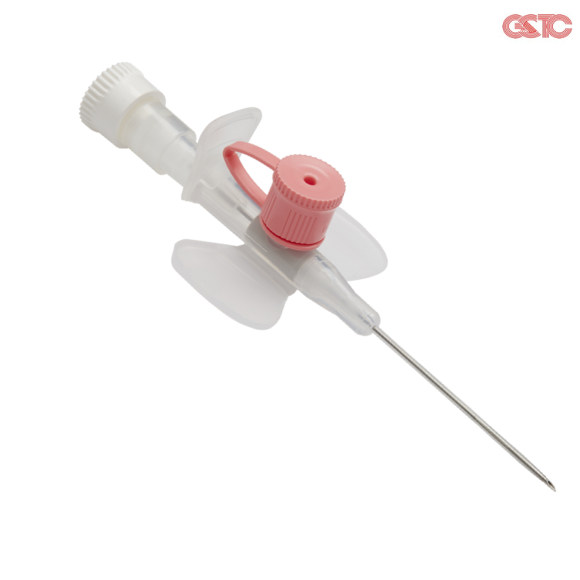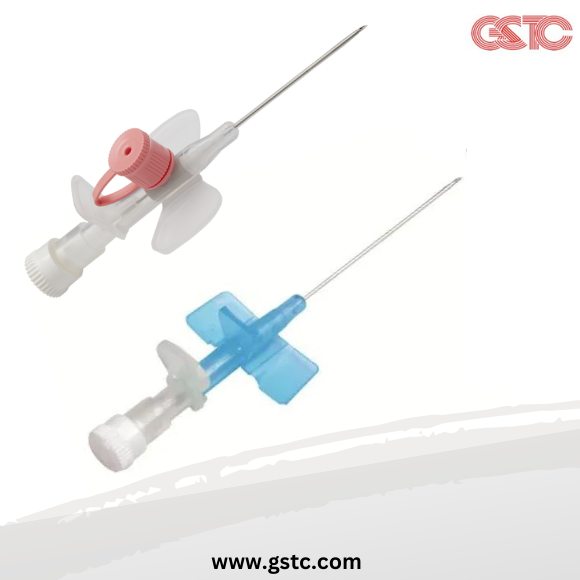Cannula for IV
GSTC's IV Cannula for safe, efficient intravenous access. Features color-coded hubs, sharp needles, flexible wings, and secure luer lock connections.

A cannula refers to a small tube that is inserted into a body cavity, duct, or vessel for medical purposes. There are two main types of cannulas: intravenous cannulas. IV cannulas consist of short, flexible tubing that are placed into a vein and are usually used for blood transfusions, blood draws, administration of medication, and providing fluids. On the other hand, nasal cannulas are a simple yet effective device for delivering oxygen.
Cannula for IV

Cannulas are small, plastic tubes inserted into a body cavity, duct, or vessel, and they serve various purposes. There are two main types of cannulas: intravenous cannulas. IV cannula can be placed into a vein for blood transfusions, blood draws, administration of medication, and providing fluids. Different subtypes of IV cannula (i.e. peripheral, central line and draining cannulas) are each used for specific reasons.
These smaller cannulas minimize the risk of intravenous cannula vein damage, infiltration, and patient discomfort, making them ideal for routine medication administration, hydration therapy, or blood sampling.
In addition to gauge size, the length of the IV cannula also varies depending on the cannula for iv manufacturer and intended use. Longer catheters may be required for deeper vein access or specific clinical applications, while shorter catheters may suffice for superficial veins or peripheral venous access.
IV Cannula Types
IV cannula subtypes include the peripheral IV cannula, the central IV cannula, and the draining cannulas. There are also several sizes of intravenous cannulas. The most common sizes range from 14 to 22 gauge. The higher the gauge number, the smaller the cannula. Different sized cannulas move liquid through them at different rates.
Medical professionals typically use peripheral IV cannulas in the emergency room and during surgery in order to provide necessary fluids or to insert contrast when taking a radiological image. These cannulas are for short-term use and may be taped to the skin to prevent them from moving.
Central IV Cannulas
Medical professionals may use a central line cannula for an individual who needs long-term treatments that require weeks or months of IV medication or fluids. For example, an individual receiving chemotherapy might require a central IV cannula for the intravenous infusion of the drugs. Central IV cannulas can quickly deliver medication and fluids into the body via the jugular, femoral, or subclavian vein. They can get easily infected; therefore, if any signs of infection (e.g. erythema, swelling, induration, fever) occur, they are typically removed.
IV Cannula Sizes
The selection of the appropriate IV cannula size depends on several factors, including the patient’s age, medical condition, vascular status, and the intended purpose of the cannula for iv therapy. Larger gauge sizes, such as 14G or 16G, are suitable for rapid fluid resuscitation or blood transfusions, as they allow for faster flow rates.
These larger cannulas are often used in emergencies or when administering large-volume infusions. On the other hand, smaller gauge sizes, such as 20G, 22G, or 24G, are preferred for patients cannula for iv with fragile or smaller veins, such as pediatric or elderly patients, or those requiring long-term IV therapy.
They consist of a flexible tube with two protruding tips that sit inside the nostrils to deliver oxygen. They can be useful if the individual is experiencing difficulty breathing as nasal cannulas can decrease the work required to breathe and the strain on the heart, therefore treating hypoxia or hypoxemia.
IV Cannula Insertion
When inserting an IV cannula in an individual’s vein (usually in their arm), the patient is asked to lie or sit down with one of their arms exposed and extended by their side. The healthcare professional performing the procedure will choose the insertion point, which is usually in the individual's non-dominant arm or hand. Then, the area is thoroughly cleaned with an antiseptic while a tourniquet is tied above the desired insertion point.
When ready, the healthcare professional will insert the IV cannula into a vein. The needle is only required to puncture the skin and vein. Once the cannula is placed in the vein, the needle is withdrawn as the cannula slides over the needle and into the vein. The cannula is then secured in place with medical tapes, such as a wrap or a special bandage.
IV Cannula Price
Health care providers use draining cannulas to drain fluids or other substances from the body. They can be used in procedures such as extracorporeal membrane oxygenation (ECMO), which is typically only used in critically ill patients with severe pulmonary and/or cardiac failure.
In ECMO, blood is drained from the venous system, oxygenated, and then returned to the body. Sometimes draining cannulas might be used during liposuction. In that case, the cannula is connected to a trocar, which is a sharp metal or plastic instrument that can puncture tissue and remove fluid from or insert fluid into a body cavity or organ.
IV cannula size is essential for optimizing patient care, minimizing complications, and ensuring the successful delivery of intravenous therapy. Healthcare providers should carefully assess individual patient factors and clinical requirements when selecting the appropriate cannula size, taking into account factors such as vein size, treatment goals, and patient comfort.
What's Your Reaction?















![Medical Purification System Integration Market Size, Share Forecast [2032]](https://www.thenewsbrick.com/uploads/images/202406/image_100x75_665ee18a955b7.jpg)

